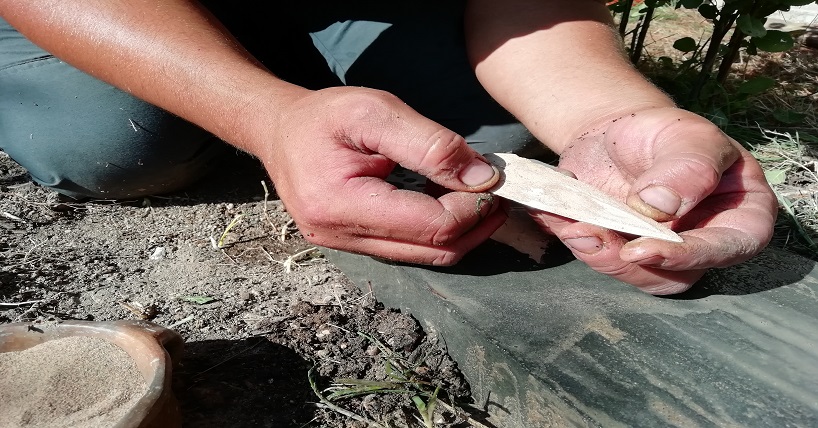Tests Indicate Bronze Age Daggers Had a Practical Purpose
Analysis of Bronze Age daggers has shown that they were used for processing animal carcasses and not as non-functional symbols of identity and status, as previously thought.

This is a significant breakthrough as the new method enables the analysis of a wide variety of copper-alloy tools and weapons from anywhere in the world.
Professor Andrea Dolfini
First appearing in the early 4th millennium BCE, copper-alloy daggers were widespread in Bronze Age Europe including Britain and Ireland. Yet archaeologists have long debated what these objects were used for.
As daggers are often found in weapon-rich male burials or ‘warrior graves, many researchers speculated that they were primarily ceremonial objects used in prehistoric funerals to mark out the identity and status of the deceased. Others suggested that they may have been used as weapons or tools for crafts.
However, the lack of a targeted method of analysis for copper-alloy metals, like those available for ceramic, stone, and shell artefacts, left this problem unresolved.
A revolutionary new method, pioneered by an international research team led by Newcastle University, UK, has enabled the world’s first extraction of organic residues from ten copper-alloy daggers excavated in 2017 from Pragatto, a Bronze Age settlement site in Italy.
The new method reveals, for the first time, how these objects were used, for what tasks, and on what materials.
The project team, led by Professor Andrea Dolfini and Isabella Caricola, developed a technique that used Picro-Sirius Red (PSR) solution to stain organic residues on the daggers.
The residues were then observed under several types of optical, digital, and scanning electron microscopes. This allowed the team to identify micro-residues of collagen and associated bone, muscle, and bundle tendon fibres, suggesting that the daggers had come into contact with multiple animal tissues and were used to process various types of animal carcasses. Uses seem to have included the slaughtering of livestock, butchering carcasses, and carving the meat from the bone.
The EU-funded project team then carried out wide-ranging experiments with replicas of the daggers that had been created by an expert bronzesmith. This showed that this type of dagger was well suited to processing animal carcasses.
The residues extracted from the experimental daggers were also analysed as part of the research and matched those observed on the archaeological daggers.
Professor Andrea Dolfini, Chair of Archaeology, Newcastle University, said: “The research has revealed that it is possible to extract and characterise organic residues from ancient metals, extending the range of materials that can be analysed in this way.
This is a significant breakthrough as the new method enables the analysis of a wide variety of copper-alloy tools and weapons from anywhere in the world.
The possibilities are endless, and so are the answers that the new method can and will provide in the future.





